Fiat Panda vs Ford Kuga - Differences and prices compared
Costs and Efficiency:
Price and efficiency are often the first things buyers look at. Here it becomes clear which model has the long-term edge – whether at the pump, the plug, or in purchase price.
Fiat Panda has a clearly advantage in terms of price – it starts at 14100 £, while the Ford Kuga costs 34200 £. That’s a price difference of around 20108 £.
Fuel consumption also shows a difference: Ford Kuga manages with 2.80 L and is therefore convincingly more efficient than the Fiat Panda with 5 L. The difference is about 2.20 L per 100 km.
Engine and Performance:
Power, torque and acceleration are the classic benchmarks for car enthusiasts – and here, some clear differences start to show.
When it comes to engine power, the Ford Kuga has a decisively edge – offering 243 HP compared to 70 HP. That’s roughly 173 HP more horsepower.
In acceleration from 0 to 100 km/h, the Ford Kuga is decisively quicker – completing the sprint in 7.30 s, while the Fiat Panda takes 13.90 s. That’s about 6.60 s faster.
In terms of top speed, the Ford Kuga performs slightly better – reaching 200 km/h, while the Fiat Panda tops out at 164 km/h. The difference is around 36 km/h.
There’s also a difference in torque: Ford Kuga pulls clearly stronger with 240 Nm compared to 92 Nm. That’s about 148 Nm difference.
Space and Everyday Use:
Cabin size, boot volume and payload all play a role in everyday practicality. Here, comfort and flexibility make the difference.
Seats: Ford Kuga offers somewhat more seating capacity – 5 vs 4.
In curb weight, Fiat Panda is clearly lighter – 1055 kg compared to 1526 kg. The difference is around 471 kg.
In terms of boot space, the Ford Kuga offers decisively more room – 412 L compared to 225 L. That’s a difference of about 187 L.
In maximum load capacity, the Ford Kuga performs clearly better – up to 1534 L, which is about 664 L more than the Fiat Panda.
When it comes to payload, Ford Kuga evident takes the win – 550 kg compared to 365 kg. That’s a difference of about 185 kg.
Who wins the race?
The Ford Kuga proves to be outperforms in nearly all aspects and therefore becomes our DriveDuel Champion!
Ford Kuga is the better all-rounder in this comparison.
 @ Ford Motor Company / Ford Media Center
@ Ford Motor Company / Ford Media Center
Ford Kuga
Costs and Consumption
View detailed analysis
Engine and Performance
View detailed analysis
Dimensions and Body
View detailed analysis
Fiat Panda
The Panda is a charming, no-nonsense city companion that mixes cheerful Italian flair with genuinely useful practicality, making tight streets and daily errands feel less of a chore. Its honest simplicity, clever packaging and a dash of cheeky character make it a smart, low-stress buy for people who prefer sensible perks over showroom flash.
details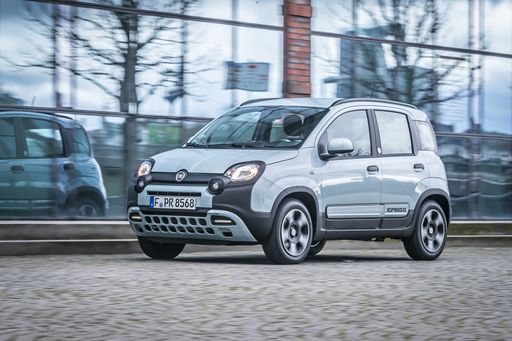 @ Fiat / Stellantis Media
@ Fiat / Stellantis Media
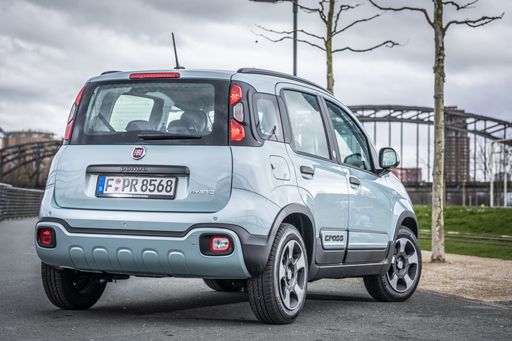 @ Fiat / Stellantis Media
@ Fiat / Stellantis Media
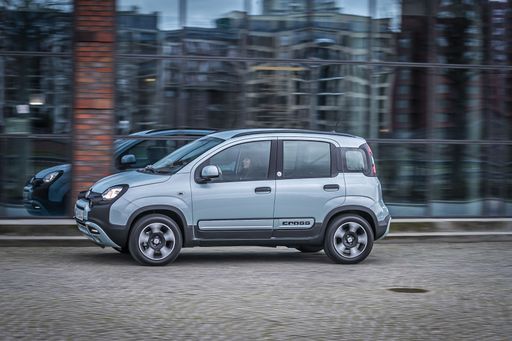 @ Fiat / Stellantis Media
@ Fiat / Stellantis Media
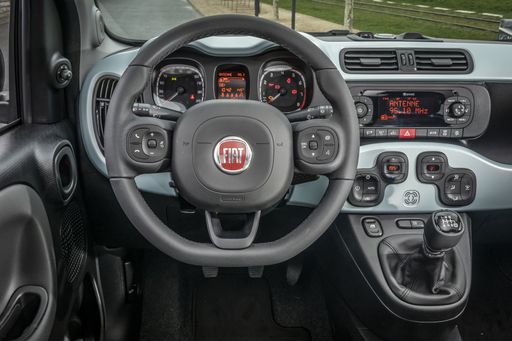 @ Fiat / Stellantis Media
@ Fiat / Stellantis Media
Ford Kuga
The Kuga is Ford’s adaptable family SUV that blends usable space with a surprisingly lively driving character, making daily commutes and weekend escapes equally enjoyable. With smart interior packaging, an easy-to-use infotainment setup and composed road manners, it’s a sensible choice for buyers who want a bit of fun without the fuss.
details @ Ford Motor Company / Ford Media Center
@ Ford Motor Company / Ford Media Center
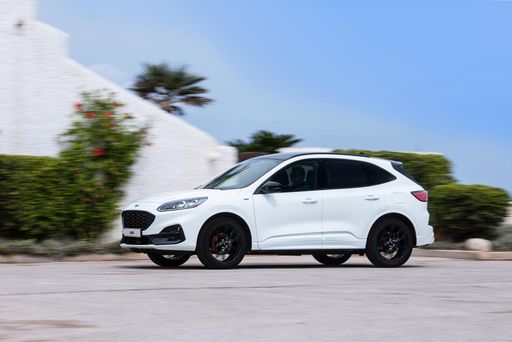 @ Ford Motor Company / Ford Media Center
@ Ford Motor Company / Ford Media Center
 @ Ford Motor Company / Ford Media Center
@ Ford Motor Company / Ford Media Center
 @ Fiat / Stellantis Media
@ Fiat / Stellantis Media
|
 @ Ford Motor Company / Ford Media Center
@ Ford Motor Company / Ford Media Center
|
|
|
|
Costs and Consumption |
|
|---|---|
|
Price
14100 £
|
Price
34200 - 46300 £
|
|
Consumption L/100km
5 L
|
Consumption L/100km
2.8 - 6.8 L
|
|
Consumption kWh/100km
-
|
Consumption kWh/100km
-
|
|
Electric Range
-
|
Electric Range
68 km
|
|
Battery Capacity
-
|
Battery Capacity
1.1 - 14.4 kWh
|
|
co2
113 g/km
|
co2
55 - 154 g/km
|
|
Fuel tank capacity
38 L
|
Fuel tank capacity
42 - 54 L
|
Dimensions and Body |
|
|---|---|
|
Body Type
Hatchback
|
Body Type
SUV
|
|
Seats
4
|
Seats
5
|
|
Doors
5
|
Doors
5
|
|
Curb weight
1055 kg
|
Curb weight
1526 - 1859 kg
|
|
Trunk capacity
225 L
|
Trunk capacity
412 L
|
|
Length
3635 mm
|
Length
4604 - 4645 mm
|
|
Width
1643 mm
|
Width
1882 mm
|
|
Height
1551 mm
|
Height
1673 - 1681 mm
|
|
Max trunk capacity
870 L
|
Max trunk capacity
1534 L
|
|
Payload
365 kg
|
Payload
541 - 550 kg
|
Engine and Performance |
|
|---|---|
|
Engine Type
Petrol MHEV
|
Engine Type
Petrol, Full Hybrid, Plugin Hybrid
|
|
Transmission
Manuel
|
Transmission
Manuel, Automatic
|
|
Transmission Detail
Manual Gearbox
|
Transmission Detail
Manual Gearbox, CVT, Automatic Gearbox
|
|
Drive Type
Front-Wheel Drive
|
Drive Type
Front-Wheel Drive, All-Wheel Drive
|
|
Power HP
70 HP
|
Power HP
150 - 243 HP
|
|
Acceleration 0-100km/h
13.90 s
|
Acceleration 0-100km/h
7.3 - 9.9 s
|
|
Max Speed
164 km/h
|
Max Speed
195 - 200 km/h
|
|
Torque
92 Nm
|
Torque
240 Nm
|
|
Number of Cylinders
3
|
Number of Cylinders
3 - 4
|
|
Power kW
51 kW
|
Power kW
111 - 178 kW
|
|
Engine capacity
999 cm3
|
Engine capacity
1496 - 2488 cm3
|
General |
|
|---|---|
|
Model Year
2024
|
Model Year
2025
|
|
CO2 Efficiency Class
C
|
CO2 Efficiency Class
E, D, B
|
|
Brand
Fiat
|
Brand
Ford
|
Is the Fiat Panda offered with different drivetrains?
Available configurations include Front-Wheel Drive.
The prices and data displayed are estimates based on German list prices and may vary by country. This information is not legally binding.
